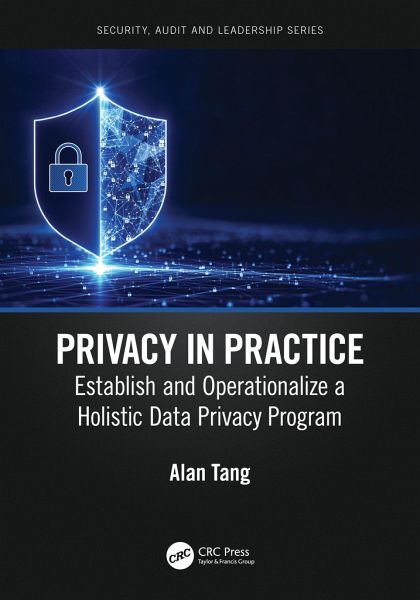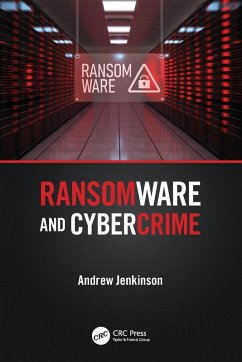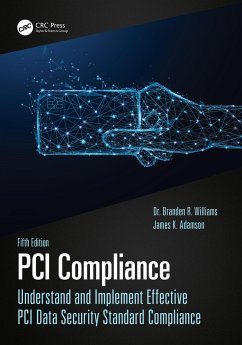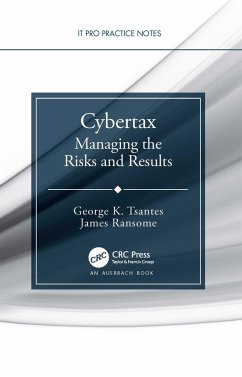
Privacy in Practice
Establish and Operationalize a Holistic Data Privacy Program
Versandkostenfrei!
Versandfertig in 6-10 Tagen
45,99 €
inkl. MwSt.
Weitere Ausgaben:

PAYBACK Punkte
23 °P sammeln!
Privacy is not just the right to be left alone, but also the right to autonomy, control, and access to your personal data. The employment of new technologies over the last three decades drives personal data to play an increasingly important role in our economies, societies, and everyday lives. Personal information has become an increasingly valuable commodity in the digital age.At the same time, the abundance and persistence of personal data have elevated the risks to individuals' privacy. In the age of Big Data, the Internet of Things, Biometrics, and Artificial Intelligence, it is becoming i...
Privacy is not just the right to be left alone, but also the right to autonomy, control, and access to your personal data. The employment of new technologies over the last three decades drives personal data to play an increasingly important role in our economies, societies, and everyday lives. Personal information has become an increasingly valuable commodity in the digital age.
At the same time, the abundance and persistence of personal data have elevated the risks to individuals' privacy. In the age of Big Data, the Internet of Things, Biometrics, and Artificial Intelligence, it is becoming increasingly difficult for individuals to fully comprehend, let alone control, how and for what purposes organizations collect, use, and disclose their personal information. Consumers are growing increasingly concerned about their privacy, making the need for strong privacy champions ever more acute.
With a veritable explosion of data breaches highlighted almost daily across the globe, and the introduction of heavy-handed privacy laws and regulatory frameworks, privacy has taken center stage for businesses. Businesses today are faced with increasing demands for privacy protections, ever-more complex regulations, and ongoing cybersecurity challenges that place heavy demands on scarce resources. Senior management and executives now acknowledge privacy as some of the biggest risks to the business.
Privacy, traditionally, has existed in a separate realm, resulting in an unintentional and problematic barrier drawn between the privacy team and the rest of the organization. With many regulatory frameworks to consider, building an all-encompassing data privacy program becomes increasingly challenging. Effective privacy protection is essential to maintaining consumer trust and enabling a robust and innovative digital economy in which individuals feel they may participate with confidence.
This book aims at helping organizations in establishing aunified, integrated, enterprise-wide privacy program. This book is aiming to help privacy leaders and professionals to bridge the privacy program and business strategies, transform legal terms and dead text to live and easy-to-understand essential requirements which organizations can easily implement, identify and prioritize privacy program gap initiatives and promote awareness and embed privacy into the everyday work of the agency and its staff.
At the same time, the abundance and persistence of personal data have elevated the risks to individuals' privacy. In the age of Big Data, the Internet of Things, Biometrics, and Artificial Intelligence, it is becoming increasingly difficult for individuals to fully comprehend, let alone control, how and for what purposes organizations collect, use, and disclose their personal information. Consumers are growing increasingly concerned about their privacy, making the need for strong privacy champions ever more acute.
With a veritable explosion of data breaches highlighted almost daily across the globe, and the introduction of heavy-handed privacy laws and regulatory frameworks, privacy has taken center stage for businesses. Businesses today are faced with increasing demands for privacy protections, ever-more complex regulations, and ongoing cybersecurity challenges that place heavy demands on scarce resources. Senior management and executives now acknowledge privacy as some of the biggest risks to the business.
Privacy, traditionally, has existed in a separate realm, resulting in an unintentional and problematic barrier drawn between the privacy team and the rest of the organization. With many regulatory frameworks to consider, building an all-encompassing data privacy program becomes increasingly challenging. Effective privacy protection is essential to maintaining consumer trust and enabling a robust and innovative digital economy in which individuals feel they may participate with confidence.
This book aims at helping organizations in establishing aunified, integrated, enterprise-wide privacy program. This book is aiming to help privacy leaders and professionals to bridge the privacy program and business strategies, transform legal terms and dead text to live and easy-to-understand essential requirements which organizations can easily implement, identify and prioritize privacy program gap initiatives and promote awareness and embed privacy into the everyday work of the agency and its staff.














